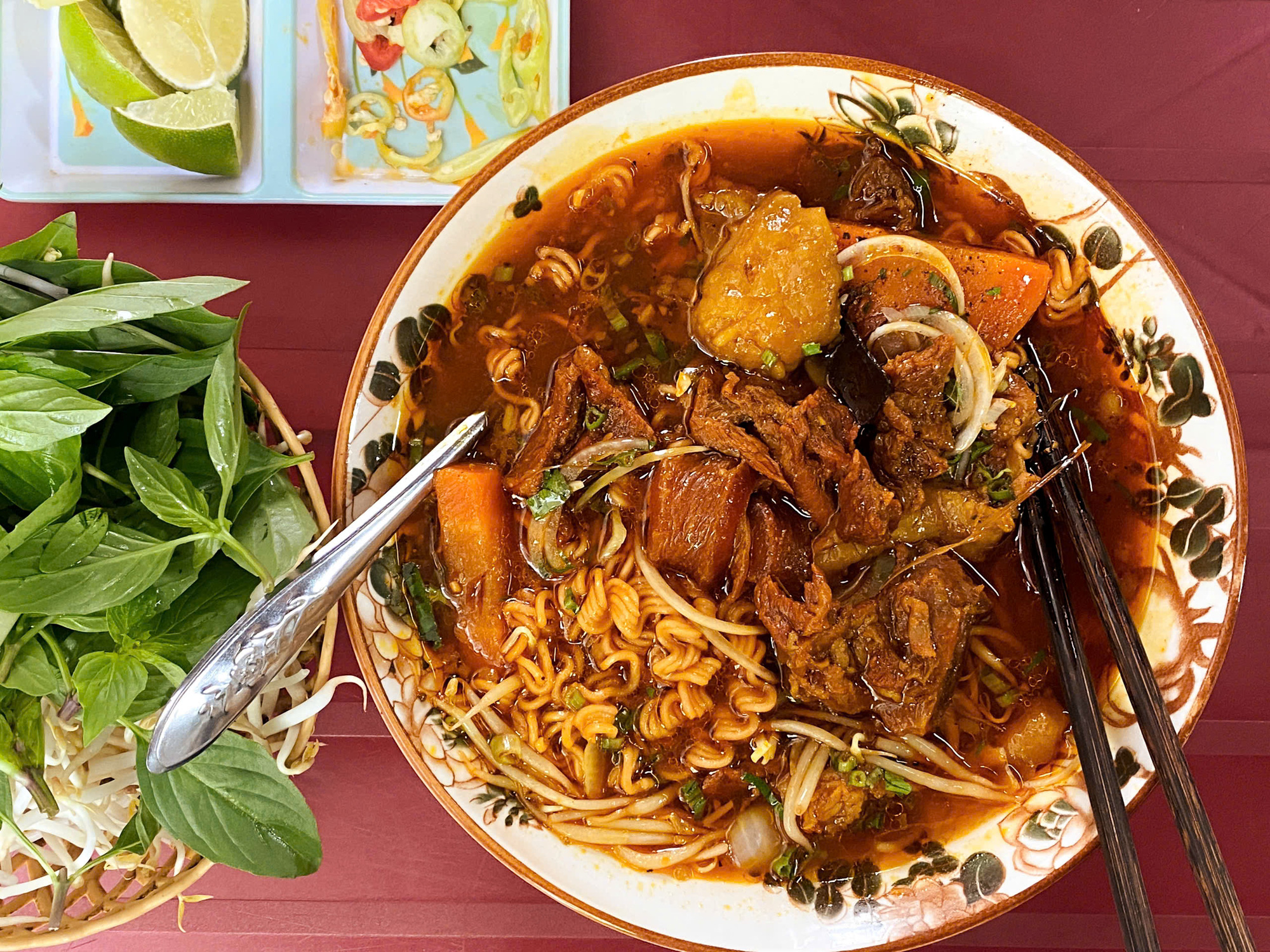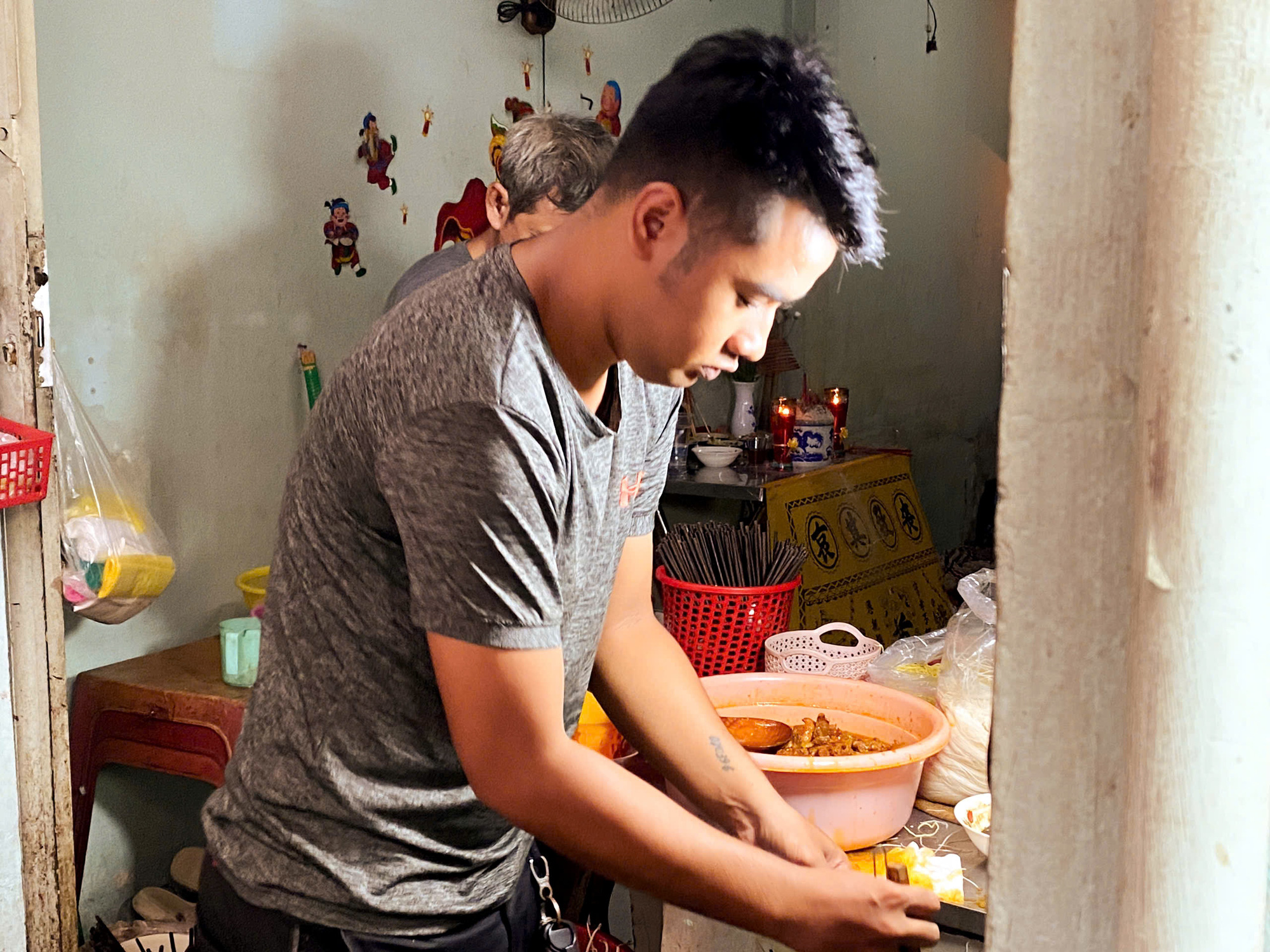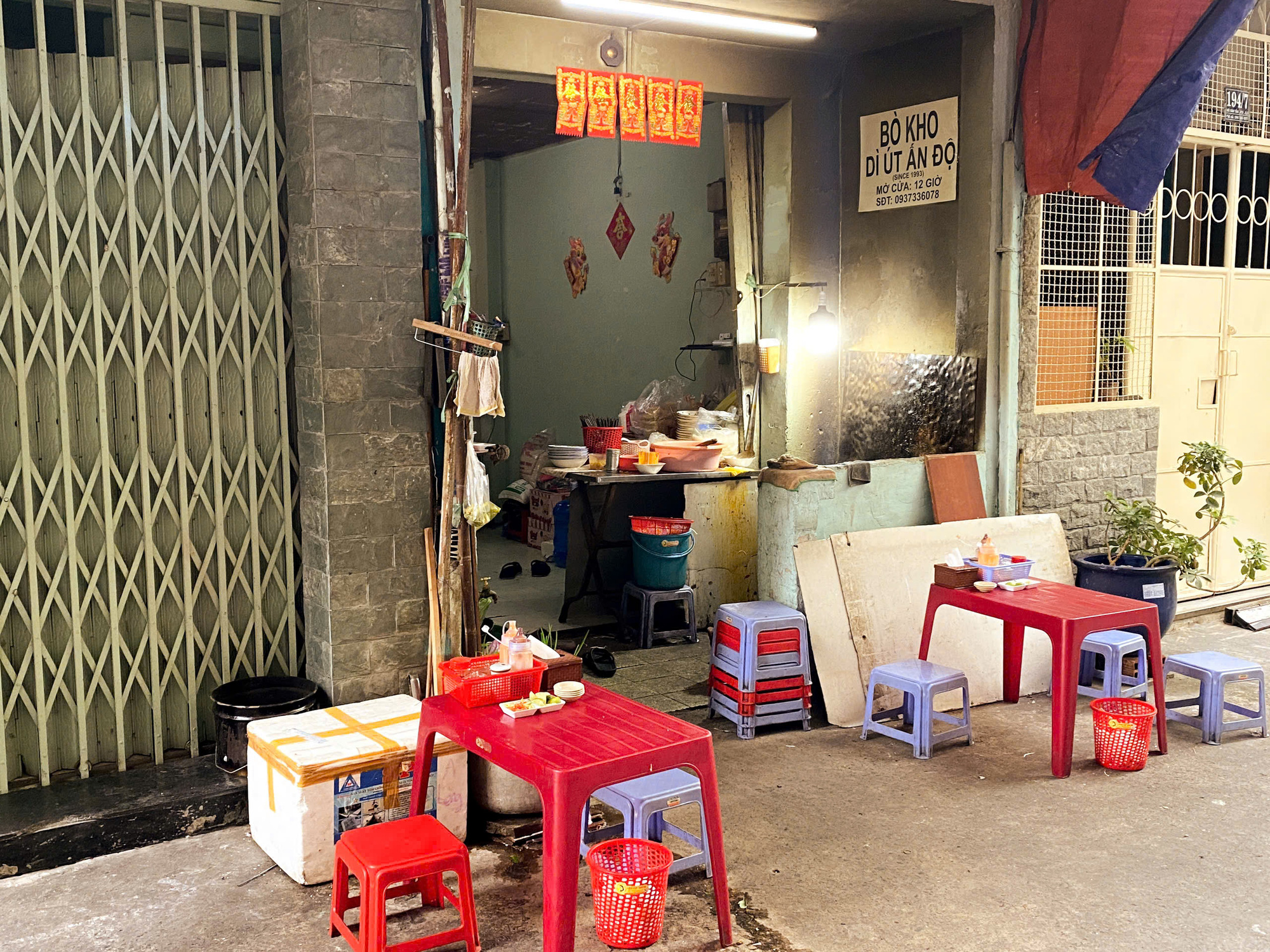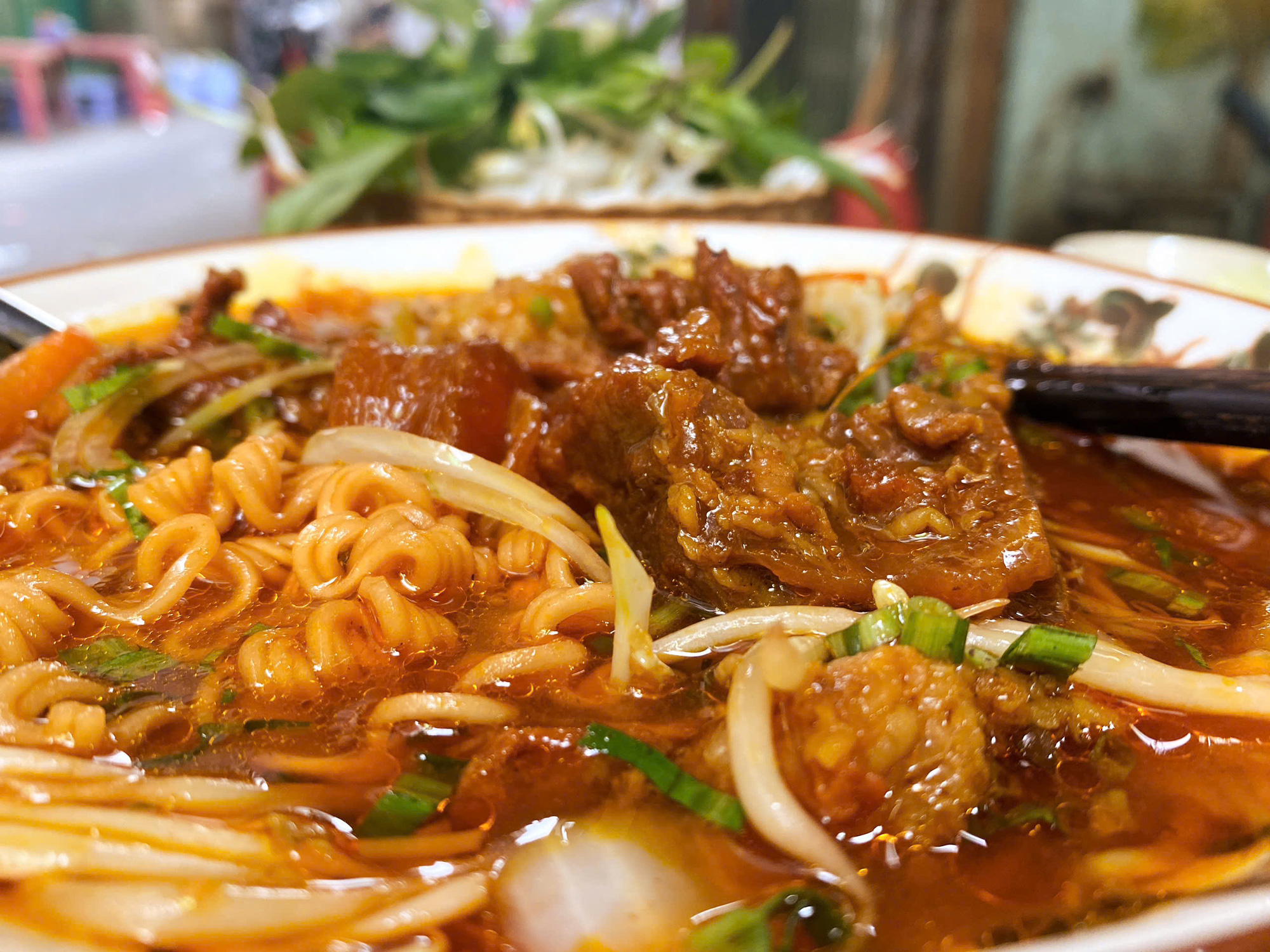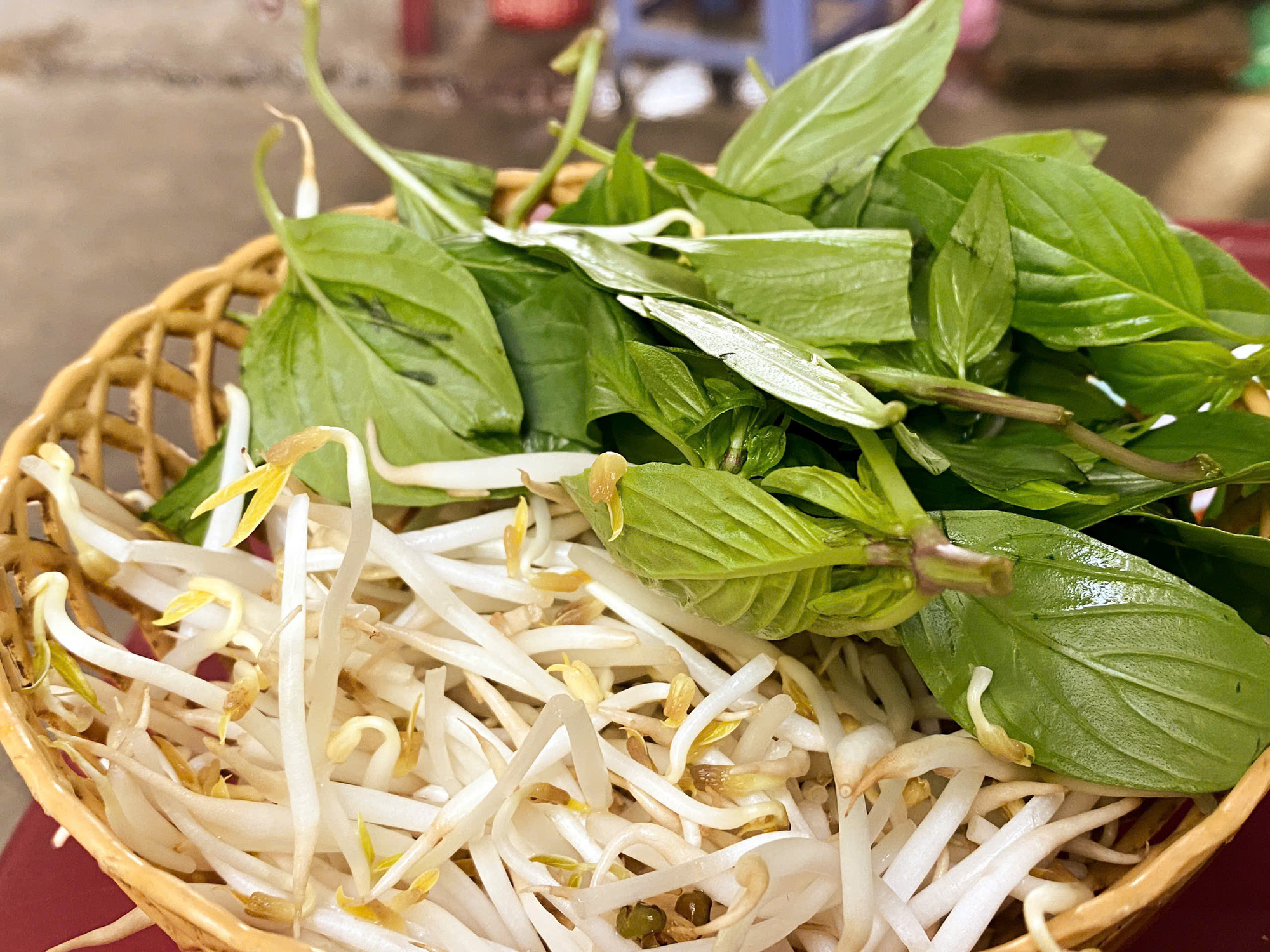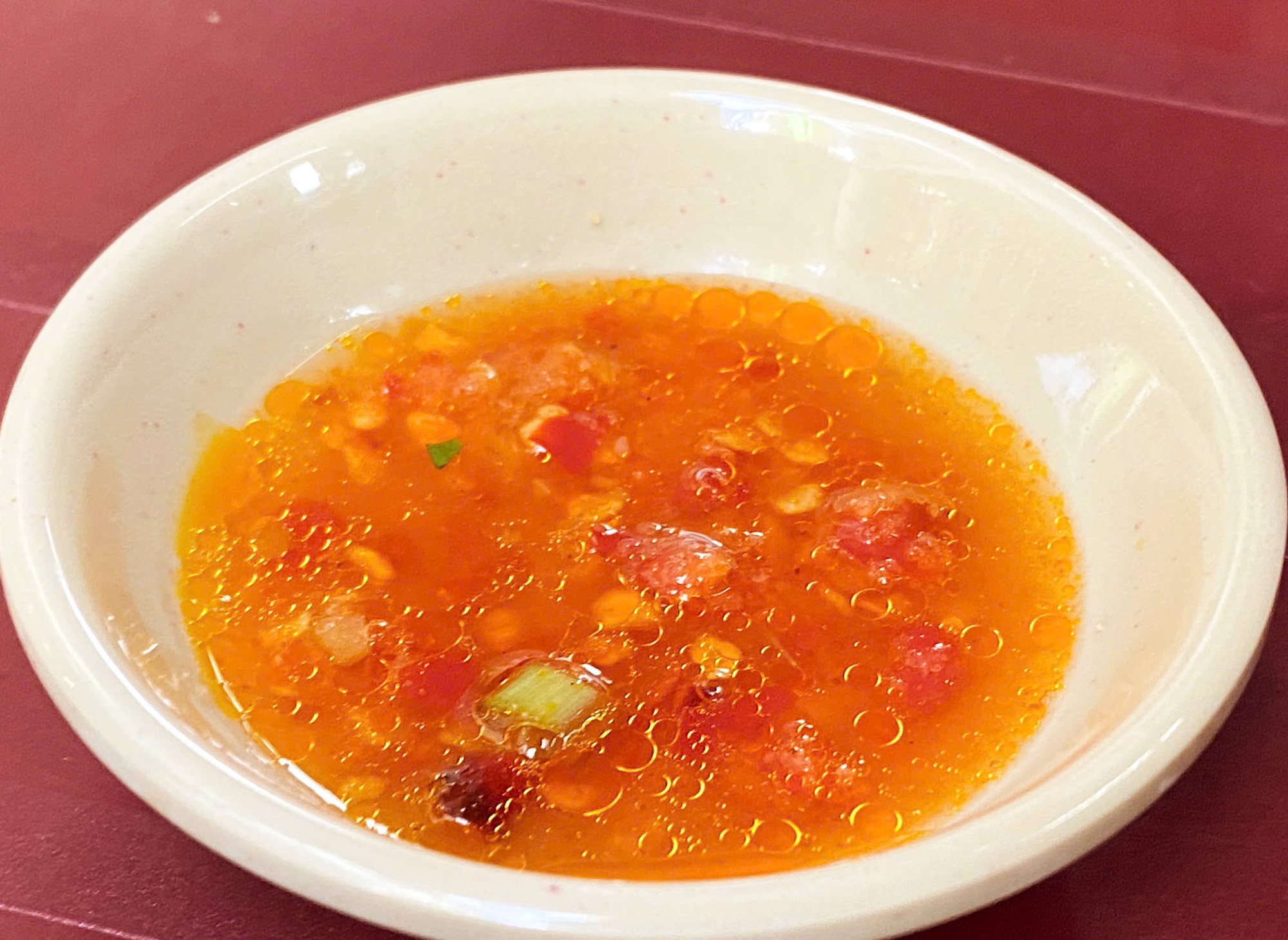Tucked away in a Ho Chi Minh City alley, a family-run restaurant has been serving a unique blend of Vietnamese and Indian flavors in its beef stew for 30 years.
Passed down through three generations, the eatery remains a hidden gem, beloved for preserving its original recipe.
As diners make their way down alley 194 on Vo Van Tan Street in District 3, they are greeted by the enticing aroma wafting from the small, time-honored shop.
The modest-width restaurant has a cooking area, darkened with smoke after generations of operation, representing the unique Vietnamese-Indian flavors of the Sau Ngoc Lam Son family.
The shop was started by his Indian grandfather and Vietnamese grandmother, who served their recipe for the first time in 1993.
|
|
| Sau Ngoc Lam Son prepares ingredients at his Vietnamese-Indian beef stew eatery down Alley 194 on Vo Van Tan Street in District 3, Ho Chi Minh City. Photo: Dang Khuong |
Son has recently taken over running the shop after his mother's passing and will continue honoring the blend of cultures and heritage.
Each day at 6:00 am, the family begins preparations.
Son and his father head to the market to source ingredients, including special items imported from India.
|
|
| Sau Ngoc Lam Son’s Vietnamese-Indian beef stew eatery sits down Alley 194 on Vo Van Tan Street in District 3, Ho Chi Minh City. Photo: Dang Khuong |
Son selects meat that is neither too tough nor soft, mindful of the elderly patrons who frequent the shop.
“The restaurant has been open for a long time, so many elderly customers dine here,” Son said.
“If the meat is tough, they can’t eat it.”
|
|
| A serving of instant noodles with Vietnamese-Indian beef stew at an eatery down Alley 194 on Vo Van Tan Street in District 3, Ho Chi Minh City. Photo: Dang Khuong |
The rich flavors and enticing aromas come from the meticulously crafted broth, which simmers for five to six hours, allowing the meat to absorb the spices while staying perfectly tender.
When a steaming bowl of beef stew is served, diners may find it hard to distinguish it from traditional Vietnamese beef stew.
It features an array of vegetables, carrots, meat, tendons, and fat, all glistening and making the mouth instantly water.
|
|
| Herbs, coriander, and bean sprouts are eaten with Sau Ngoc Lam Son’s Vietnamese-Indian beef stew. Photo: Dang Khuong |
The first bite reveals a familiar yet intriguing aroma.
As a habit, Vietnamese diners often squeeze a bit of lemon and add herbs, coriander, and bean sprouts.
The meat is firm and flavorful, striking a balance that avoids being overly sweet or salty.
|
|
| Dipping sauce for Sau Ngoc Lam Son’s Vietnamese-Indian beef stew. Photo: Dang Khuong |
Patrons can enjoy their bowls with bread, instant noodles, or flat rice noodles.
Son notes that while the current recipe has been adjusted to suit local tastes, the core cooking methods remain true to his grandmother’s and mother’s traditions, preserving the original flavor.
“If made exactly the Indian way, it can be quite difficult to eat because the beef stew tends to have a harsh and strong flavor, even though the beef itself has a wonderfully fragrant aroma,” Son explained.
Like us on Facebook or follow us on X to get the latest news about Vietnam!



